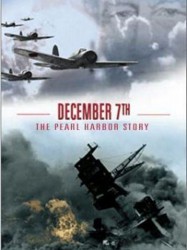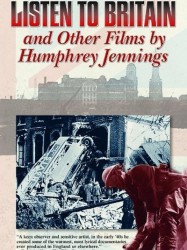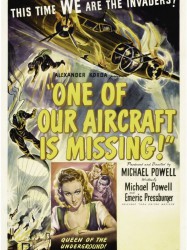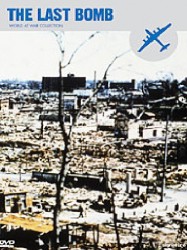Special Delivery est un film
Special Delivery (1946)

Si vous aimez ce film, faites-le savoir !
Durée 12minutes
Special Delivery was a short 1946 propaganda film produced by the United States Army Air Forces about Operation Crossroads, when Bikini atoll was, in 1946, evacuated to be the subject of two (three planned) atomic bomb tests on a large assembled fleet.
Synopsis
The film begins with shots of American bombers flying in formation and the narrator giving the audience a dictionary definition of a "special delivery" and the vital role that air power played in winning the late conflict. He goes on to say that the Air Force can have constructive, as well as destructive uses—several examples are shown of this, including the dropping of food and supplies to remote areas, using B-17s to get serum to Alaska and B-25s to deploy DDT, and using helicopters to rescue the wounded.[...]Voir plus...
Commentaires
Postez un commentaire :
Suggestions de films similaires à Special Delivery
Il y a 13805 films qui ont les mêmes thèmes (dont 82 films qui ont les mêmes 6 thèmes que Special Delivery), pour avoir au final 70 suggestions de films similaires.Si vous avez aimé Special Delivery, vous aimerez sûrement les films similaires suivants :

Pearl Harbour (1943)
, 34minutesRéalisé par Gregg Toland, John Ford
Origine Etats-Unis
Genres Guerre, Documentaire, Action, Historique
Thèmes La mer, Transport, Aviation, Documentaire sur la guerre, Documentaire historique, Documentaire sur les technologies, Politique, Documentaire sur la Seconde Guerre mondiale, Forces armées des États-Unis
Acteurs Walter Huston, Dana Andrews, Harry Davenport, George O'Brien, Paul Hurst, James Kevin McGuinness
Note60%





Jugée trop « compatissante » envers les japonais, et coupée au montage par l’État-Major américain, cette reconstitution hautement réaliste reçut néanmoins l’Oscar® du meilleur documentaire en 1943.

Stukas (1941)
, 1h41Origine Allemagne
Genres Drame, Guerre
Thèmes Politique, Transport, Aviation, Documentaire sur la guerre, Documentaire historique, Politique, Documentaire sur la Seconde Guerre mondiale
Acteurs Carl Raddatz, Hannes Stelzer, Ernst von Klipstein, Albert Hehn, Herbert Wilk, O. E. Hasse
Note52%





Les personnages principaux du film sont des pilotes de deux escadrons de bombardiers en piqué allemands ou Stukas. Le film n'a pas une intrigue stricte, la continuité narrative est brisée entre la vie dans la caserne et le combat aérien. Plusieurs aviateurs meurent et sont honorés par leurs camarades. Cette mort se produit "hors écran" et n'est reproduite que oralement.

Listen to Britain (1942)
, 19minutesRéalisé par Stewart McAllister, Humphrey Jennings
Origine Royaume-uni
Genres Documentaire
Thèmes Transport, Aviation, Documentaire sur la guerre, Documentaire historique, Politique, Documentaire sur la Seconde Guerre mondiale
Note64%





 , 1h18
, 1h18Genres Documentaire, Historique
Thèmes L'environnement, La mer, Transport, Aviation, Documentaire sur l'environnement, Documentaire sur la guerre, Documentaire historique, Documentaire sur le nucléaire, Documentaire sur les technologies, Politique, Documentaire sur la Seconde Guerre mondiale
Note75%






49ème parallèle (1941)
, 2h3Réalisé par Michael Powell
Origine Royaume-uni
Genres Drame, Guerre, Thriller, Aventure
Thèmes La mer, Politique, La prison, Transport, Aviation, La bataille de l'Atlantique, Documentaire sur la guerre, Documentaire historique, Politique, Documentaire sur la Seconde Guerre mondiale
Acteurs Leslie Howard, Laurence Olivier, Raymond Massey, Raymond Lovell, Niall MacGinnis, Anton Walbrook
Note72%





Pendant la Seconde Guerre mondiale, un sous-marin allemand coule un navire près des côtes canadiennes. Aussitôt, il tente un repli stratégique vers la baie d'Hudson mais il est repéré et bombardé. Six marins allemands survivants se retrouvent seuls sur le gigantesque territoire canadien. Ils doivent traverser le pays, rejoindre les États-Unis encore neutres, et espérer ainsi s'échapper du continent pour retourner en Allemagne.

Saga of the Franklin (1945)
, 24minutesOrigine Etats-Unis
Genres Guerre
Thèmes La mer, Transport, Aviation, Documentaire sur la guerre, Documentaire historique, Documentaire sur les technologies, Politique, Documentaire sur la Seconde Guerre mondiale, Forces armées des États-Unis
 , 1h42
, 1h42Réalisé par Michael Powell, Emeric Pressburger
Origine Royaume-uni
Genres Drame, Guerre, Action
Thèmes Politique, Transport, Aviation, Documentaire sur la guerre, Documentaire historique, Politique, Documentaire sur la Seconde Guerre mondiale, Film catastrophe, Film de catastrophe aérienne
Acteurs Godfrey Tearle, Eric Portman, Hugh Williams, Bernard Miles, Hugh Burden, Emrys Jones
Note69%





Après que leur bombardier B for Bertie a été touché au-dessus des Pays-Bas, l'équipage saute en parachute. Des résistants néerlandais vont les aider à retourner en Grande Bretagne.

The Last Bomb (1945)
, 35minutesRéalisé par Frank Lloyd
Origine Etats-Unis
Genres Documentaire
Thèmes L'environnement, La mer, Transport, Aviation, Documentaire sur l'environnement, Documentaire sur la guerre, Documentaire historique, Documentaire sur le nucléaire, Documentaire sur les technologies, Politique, Documentaire sur la Seconde Guerre mondiale, Forces armées des États-Unis
Acteurs Reed Hadley, John Arthur Kennedy, James Seay, Don Taylor
Note63%






The Stilwell Road (1945)
, 50minutesOrigine Etats-Unis
Genres Documentaire
Thèmes Transport, Aviation, Documentaire sur la guerre, Documentaire historique, Politique, Documentaire sur la Seconde Guerre mondiale
Acteurs Ronald Reagan
Note63%






Atomic Mom (2010)
, 1h27Origine Etats-Unis
Thèmes L'environnement, La mer, Transport, Aviation, Documentaire sur l'environnement, Documentaire sur la guerre, Documentaire historique, Documentaire sur le nucléaire, Documentaire sur les technologies, Politique, Documentaire sur la Seconde Guerre mondiale
Note63%





Atomic Mom is a documentary film written and directed by M.T Silvia, which focuses on the connection between two mothers that are each on a different end of the Hiroshima atomic warfare spectrum: Pauline Silvia, a United States Navy biologist, and one of the only female scientists present during the 1953 radiation detonations of Operation Upshot-Knothole at the then-Nevada Test Site, and Emiko Okada, a Japanese woman who was exposed to radiation from the Hiroshima nuclear bombings as a child. Atomic Mom also offers a comparison of the Hiroshima Peace Memorial Museum and the Atomic Testing Museum in Las Vegas, Nevada.
[...]Voir plus...
 Connexion
Connexion